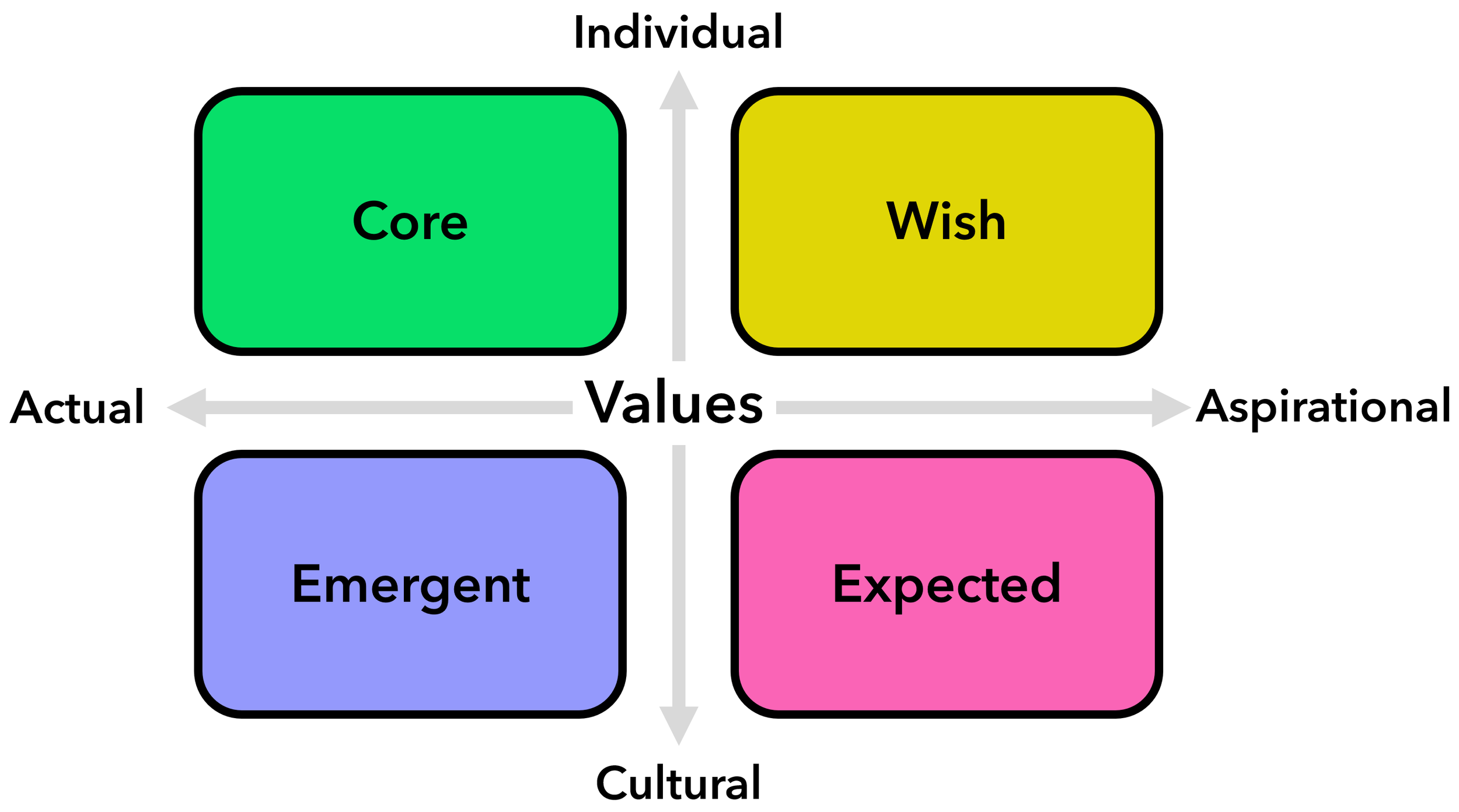
Behavioral Values - Core, Wish, Emergent, Expected
Defining and living by behavioral values is crucial for creating a positive culture and achieving success in any organization or team.
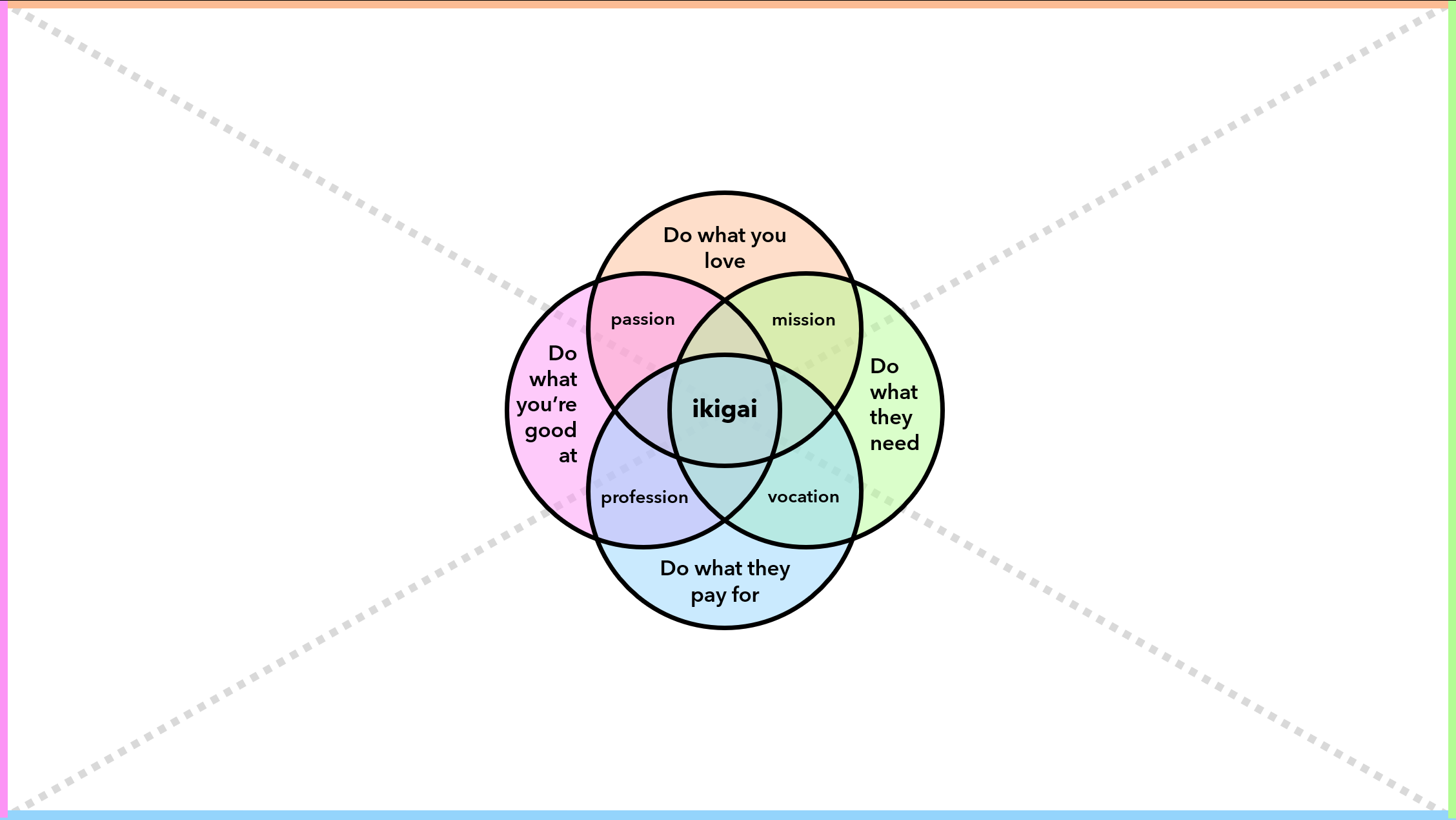
Ikigai - Meaning and Purpose
The Ikigai model has gained popularity as a tool for individuals and organizations to define their purpose.
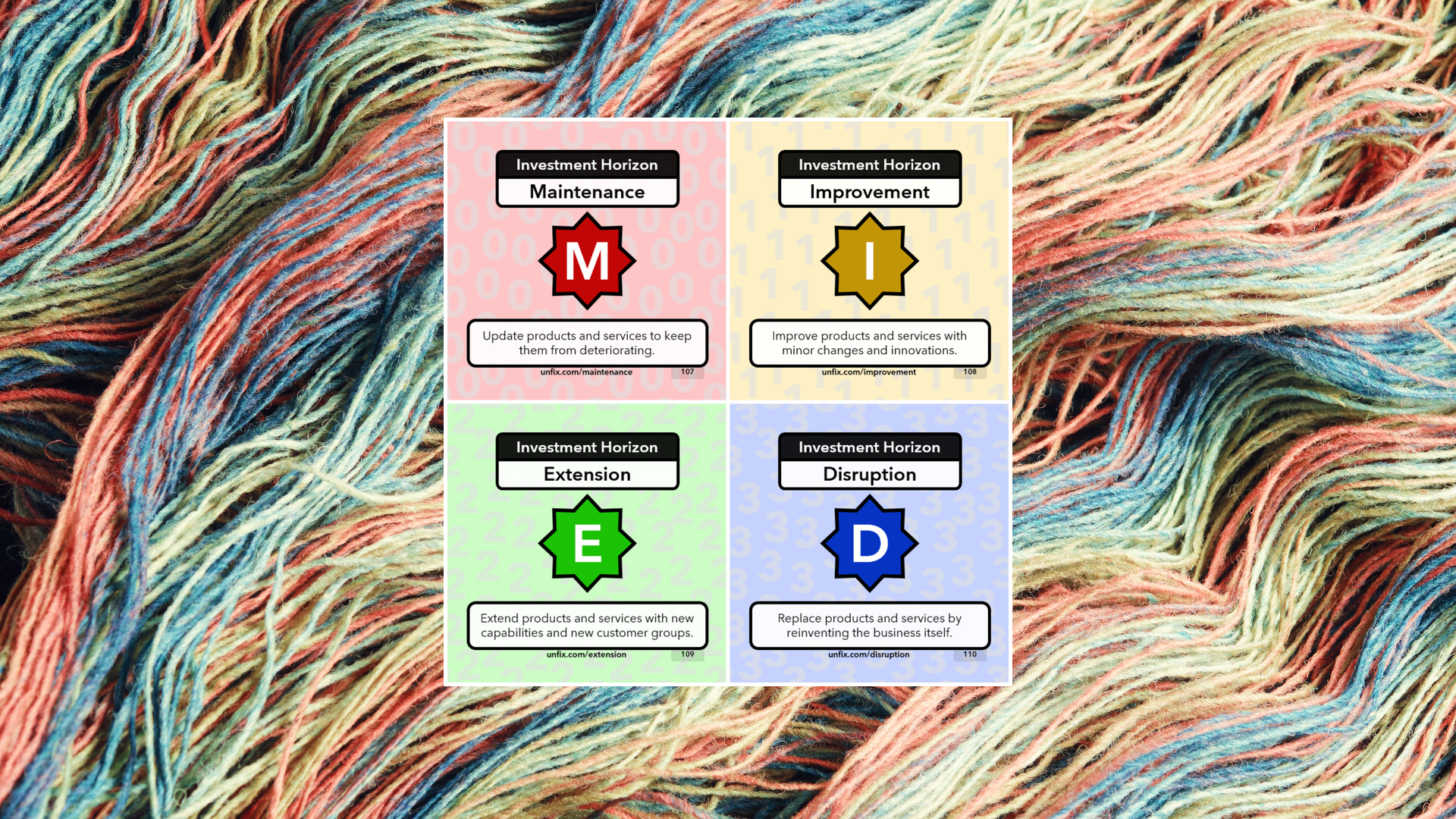
Allocate Capacity Across Investment Horizons
Who is responsible for Maintenance? Are Improvement and Extension ideas gathered on a shared backlog, or are they kept separate? And how does the organization reserve time for true Disruption?
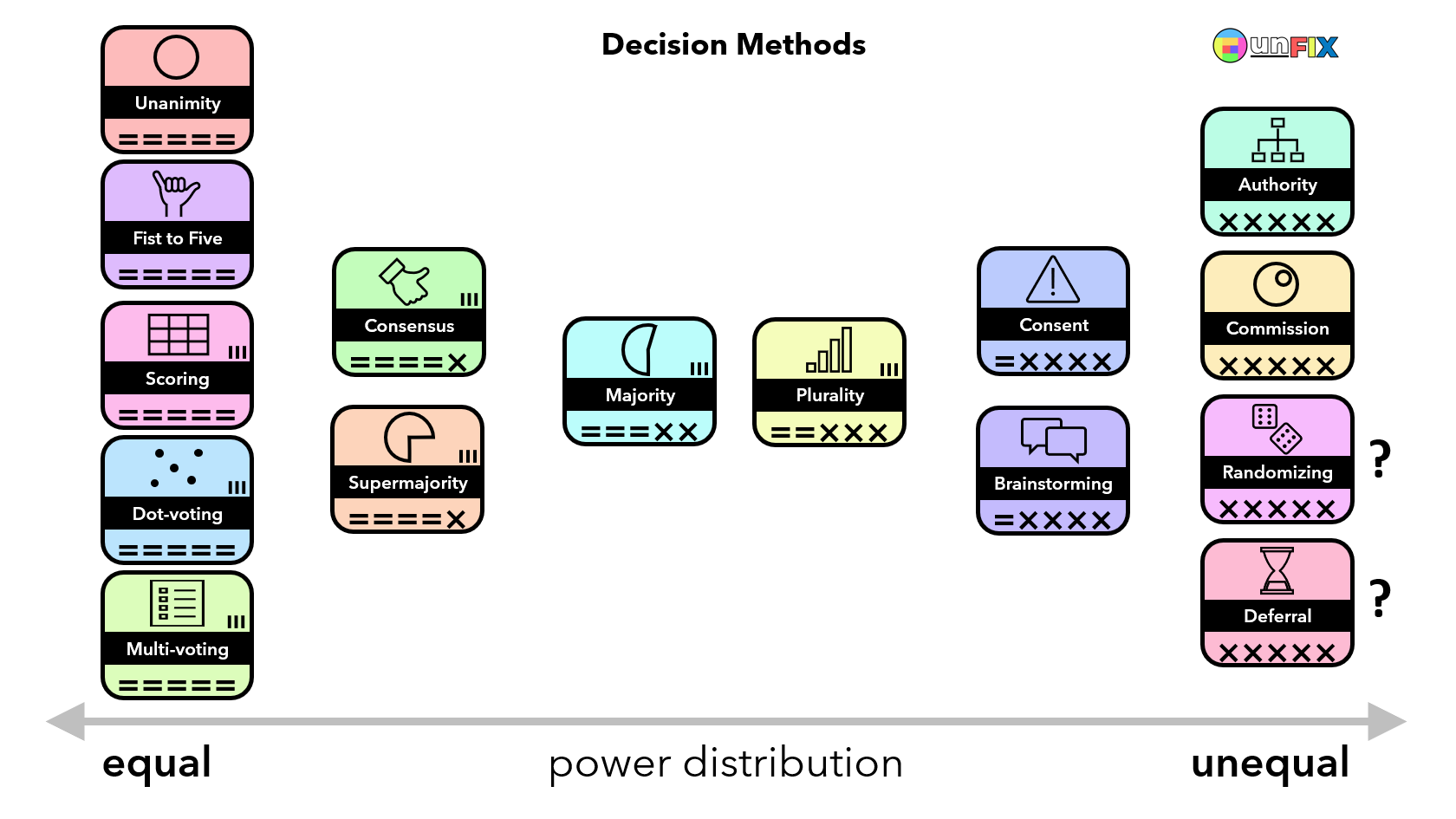
Power Distribution in Decision-making
We often say we find it important that we treat people equally. But is everyone really equal on your self-organizing team? Do all team members have an equal say in their discussions? You need to be aware there may not be an equal power distribution in your group's decision-making process.

Ten Lifecycle Stages of a Value Stream
The ten lifecycle stages are fractal: they can apply to entire businesses and individual feature sets.

Either Cheap, Safe, and Fast, or … Veto!
“No” is not the same as “Heavens, No!” We use the Veto card when facing real failure: experiments that are not cheap, safe, or fast. Everything else is worth trying.

No More Fixed Jobs (for Me)
The four Time Commitment patterns in the unFIX Model may help your team members clarify what they like best. You can use the cards to design a game or use the symbols to annotate your organization designs.

Dependencies Make Us Better
Division of labor introduces dependencies. We must limit the number of contexts we are involved in and willfully divide our labor because dependencies make us better.
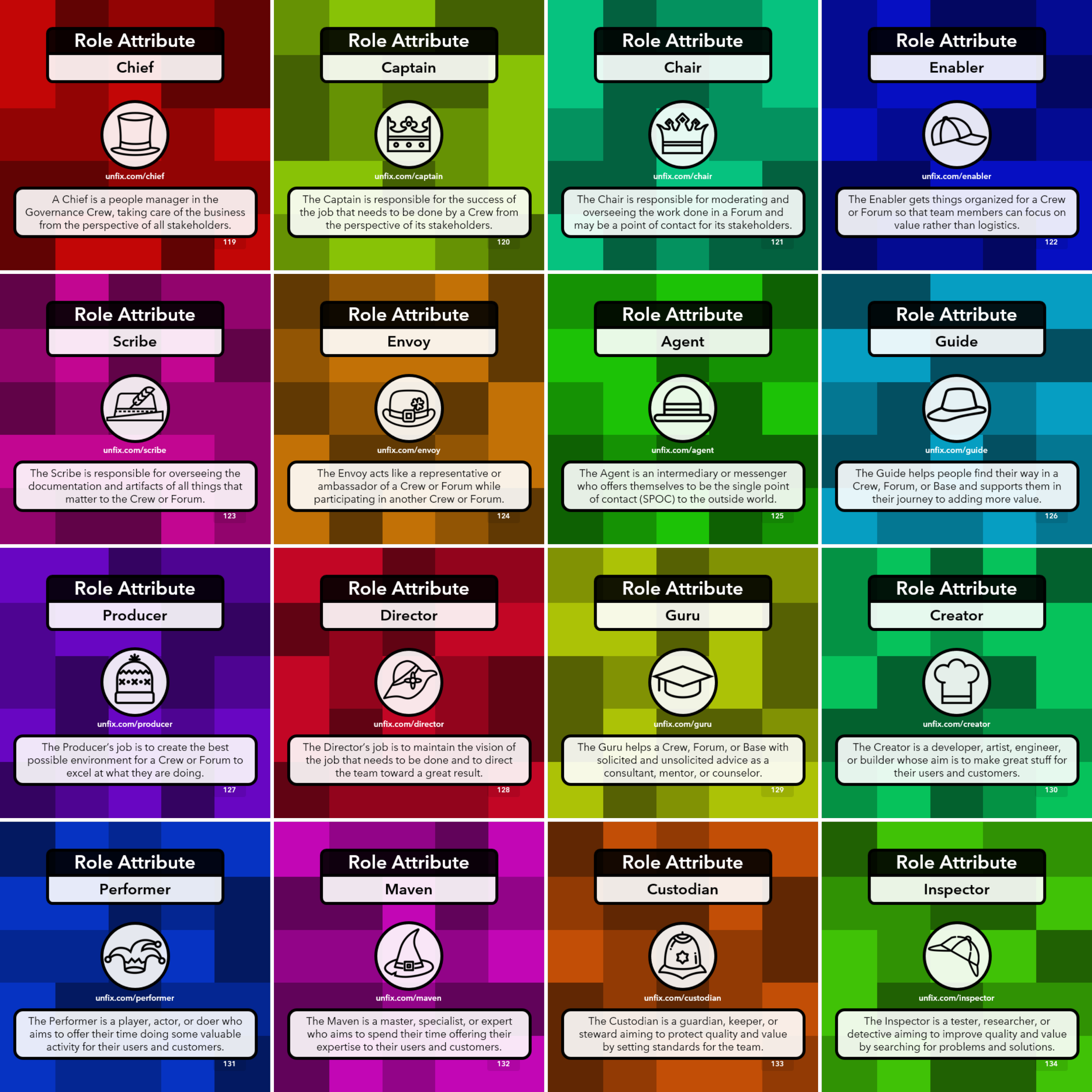
Just Enough Roles: Less Is More
Sometimes, roles are helpful; sometimes, they are not. The challenge in organization design is to strike a balance between clarity and flexibility. The set of Role Attributes in the unFIX Model can help you with that.

The First CX Test: Where’s My Invoice?
Many product teams fail to understand the customer experience. For example, if you force me to go on a treasure hunt to find the invoices, you already failed the First CX Test.

We Don't Believe in an Implementation Roadmap.
An agile transformation is not a step-by-step process with a linear roadmap. It is messy, fuzzy, and non-linear. You must revisit each stream of the Innovation Vortex regularly, and your organization design will never achieve the status of Done. The best you can aim for is Good Enough for Now.
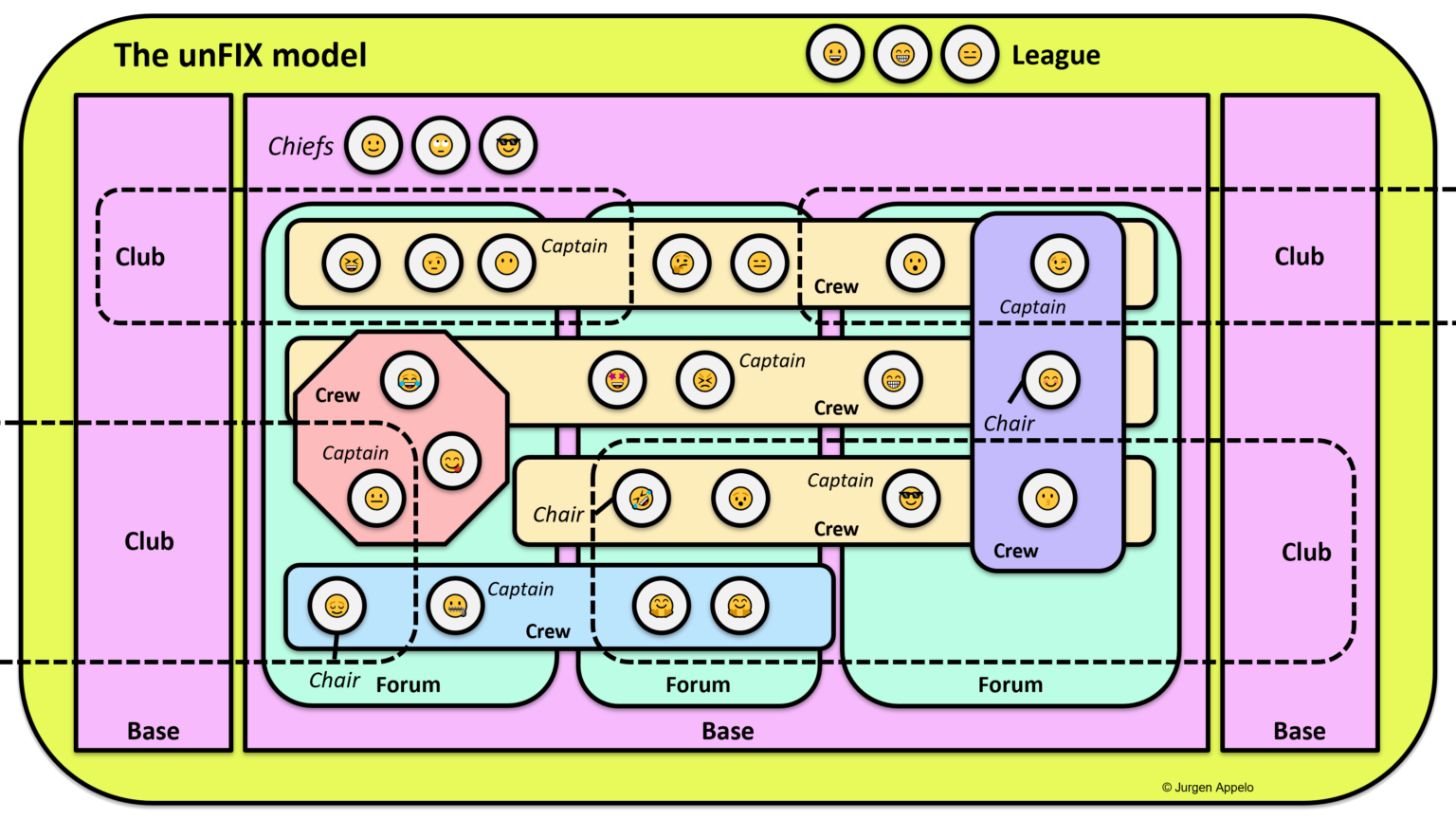
The unFIX Model for Versatile Organizations
The unFIX model as described here is ready for a future of dynamic reteaming, team topologies, and hybrid working. It allows a company to become a genuinely versatile organization.
